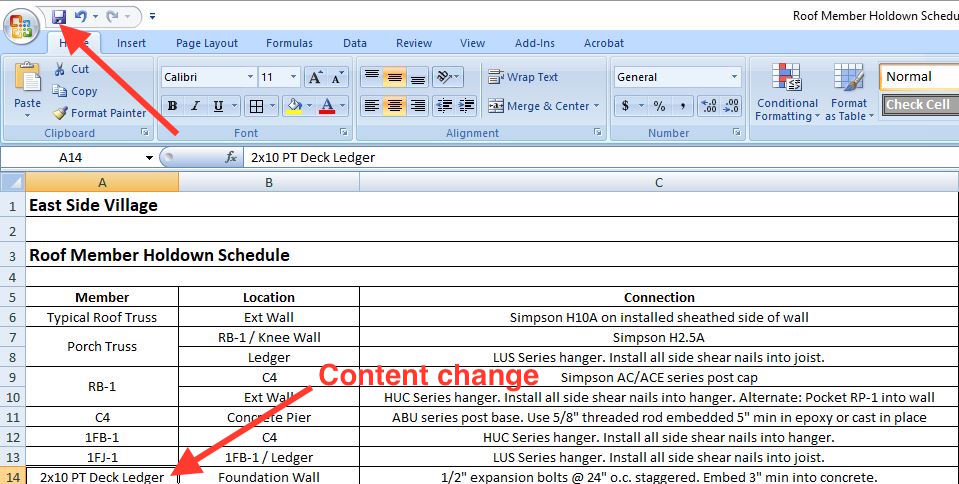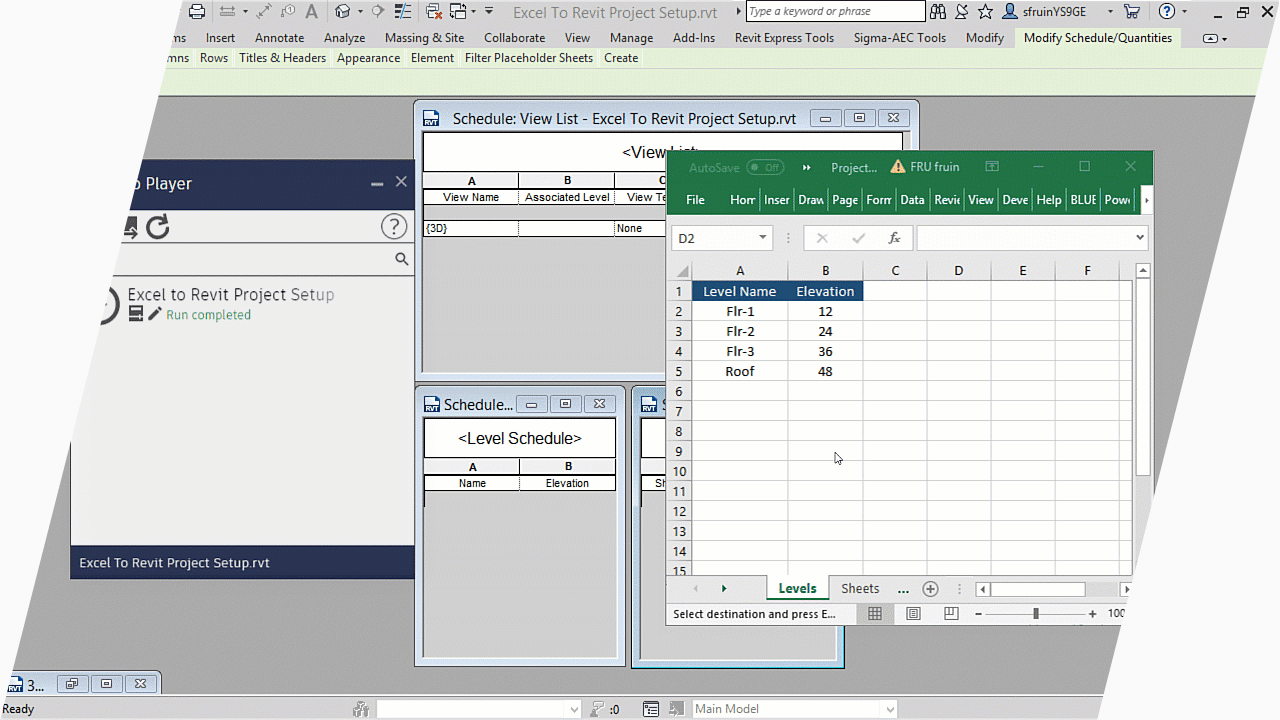Effectiveness Meets Accuracy: Discover Essential Revit Tools
Wiki Article
Revit Excel Integration Demystified: Simplifying Process for Boosted Task Sychronisation
Are you tired of fighting with ineffective task coordination and time-consuming workflows? Look no more, due to the fact that Revit Excel Assimilation is here to debunk the procedure and simplify your tasks. With this effective tool, you can boost project sychronisation and get rid of the headache of hand-operated data access. In this article, we will certainly assist you through the value of Revit Excel Combination, show you just how to simplify operations, and offer finest methods for effective combination. Prepare to transform your job control with ease.The Relevance of Revit Excel Integration
You require to understand the value of Revit Excel assimilation to successfully enhance your operations and improve task sychronisation. The integration of Revit, an effective building info modeling (BIM) software program, with Excel, an extensively used spread sheet program, provides many benefits for engineers, designers, and building specialists.

By integrating Revit with Excel, you can get rid of hand-operated information entrance and decrease the danger of mistakes. This not only conserves time but likewise ensures accuracy in your job documents. You can update data in Excel, and it will instantly update in Revit, maintaining consistency throughout your task.
Moreover, Revit Excel assimilation enhances project control by allowing efficient collaboration amongst team members. With data synchronized in between Revit and Excel, everybody can access one of the most updated information and interact effortlessly. This promotes smoother communication, decreases conflicts, and enhances overall project effectiveness.
How to Improve Workflows With Revit Excel Integration
Maximize your procedure by effortlessly attaching Revit and Excel to improve your process. By integrating these two effective devices, you can boost task control and improve effectiveness in your work. With Revit Excel combination, you can conveniently transfer information in between the two systems, enabling seamless interaction and cooperation.

One more advantage of Revit Excel combination is the ability to develop personalized records and evaluate data much more effectively. With Excel's durable functions, you can perform sophisticated computations, develop charts and charts, and create detailed reports based upon the information from your Revit models. This permits you to get valuable insights and make educated decisions throughout the job.
Enhancing Job Coordination With Revit Excel Integration
By seamlessly connecting your layout software program with effective information analysis tools, you can considerably boost the sychronisation of your tasks. Revit Excel assimilation permits you to enhance your workflows and improve task sychronisation by getting rid of manual data access and minimizing mistakes. With this assimilation, you can easily move data in between Revit and Excel, making certain that all task info is up to day and accurate.One of the vital advantages of Revit Excel combination is the capability to import and export information between the two software flawlessly. This indicates that you can conveniently import existing project data from Excel into Revit, conserving you effort and time in re-entering information. You can export project information from Revit to Excel, allowing you to perform advanced evaluation and estimations making use of the powerful attributes of Excel.
Furthermore, Revit Excel combination allows you to develop dynamic links between the two software application (revit tools). This suggests that any kind of modifications made in Revit will immediately upgrade in Excel, and vice versa. This makes certain that all project stakeholders are dealing with the most updated details, enhancing job coordination and decreasing the danger of mistakes
Overcoming Challenges in Revit Excel Assimilation
When conquering obstacles in the assimilation of Revit and Excel, it is necessary revit tools to make certain smooth information transfer and minimize mistakes. One usual obstacle is the compatibility of data formats between Revit and Excel. To tackle this, you can utilize plugins or add-ins that assist in the conversion of data from one format to one more. These devices help preserve the stability of the information throughout the transfer process.An additional obstacle is the absence of synchronization between Revit and Excel. It's crucial to establish a clear process that makes sure both systems are upgraded in real-time. This can be attained by utilizing cloud-based collaboration devices or establishing a system for regular data syncing.
Taking care of large datasets can also be bothersome. When it comes to dealing with huge quantities of data, revit and Excel have various capabilities. To overcome this challenge, you can split the data right into smaller, manageable chunks or utilize information filtering strategies to focus on certain locations of passion.
Lastly, human error can lead to inconsistencies in between Revit and Excel information. It's important to train staff member on the assimilation process and establish top quality control steps to capture any mistakes. Routine audits and cross-checks can assist determine and remedy any type of incongruities.
Best Practices for Successful Revit Excel Combination
To guarantee successful assimilation of Revit and Excel, it is essential to adhere to some ideal methods that will assist enhance your workflow and decrease errors. Most importantly, constantly start by producing a organized and clear folder framework for your task data. When required, this will make it easier to locate and upgrade the necessary data. Additionally, when linking Excel data right into Revit, ensure that the data is complimentary and clean from any kind of formatting problems that could create errors. Use regular calling conventions for your Excel worksheets and columns to prevent confusion.One more important practice is to on a regular basis upgrade your Excel data in Revit. This can be easily achieved by developing a clear process for updating the connected data. Make it a behavior to evaluate and upgrade the data at normal periods, especially when changes are made to the job. This will assist keep your information precise and up to date.

Final Thought
So, there you have it - revit Excel assimilation doesn't need to be a complicated task. By improving your process with this effective mix, you can enhance job coordination and accomplish greater efficiency. Keep in mind to get rid of any kind of challenges that may arise and follow finest practices for successful assimilation. With revit Excel assimilation demystified, you'll be well on your means to making the most of the potential of these devices and taking your projects to new elevations.You can export your Revit timetables to Excel, make modifications or updates in Excel, and after that import the upgraded information back into Revit with simply a couple of clicks. Revit Excel integration enables you to simplify your process and enhance project control by eliminating hand-operated data entry and reducing mistakes. With this combination, you can easily transfer information in between Revit and Excel, making sure that all job information is up to date and accurate.
You can export task data from Revit to Excel, enabling you to perform advanced analysis and computations making use of the powerful features of Excel.
Furthermore, when connecting Excel data right into Revit, make sure that the data is totally free and clean from any kind of formatting concerns that could trigger mistakes.
Report this wiki page